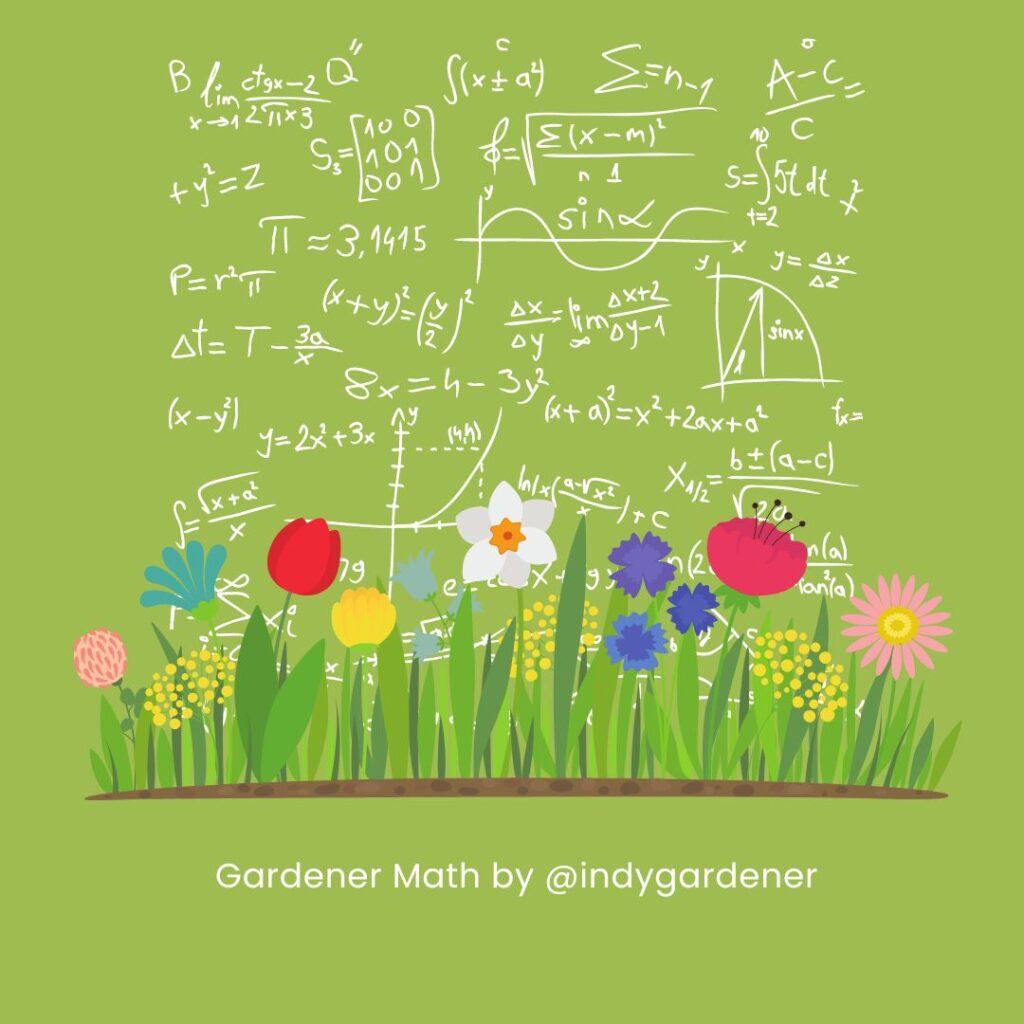
It all started with “girl math,” which is a thing that popped up one day on social media, and then grew and grew, and now there are all kinds of maths out there, including gardener math.
One example of “girl math” is that if you pay in advance for tickets to an event, then on the day of the event, you are really going for free. That works for gardeners, too. If you pay in advance to go to a day of gardening talks, then that day, as others line up to pay at the door, you are waltzing in for free! And with all your savings, you can buy more seeds and plants.
Another “girl math” example is if you don’t buy something on sale, you are actually losing money because, “it’s on sale!” Take that concept to the local garden center and start saving money by buying houseplants on sale. The more you buy, the more money you save because it’s all on sale! And just think of what you can buy with your savings.
You get the idea, but allow me to give you some more examples of gardener math.
If you must buy $50 worth of plants to get free shipping, and you really only planned to buy one plant for $10, then all the other plants you bought to get to $50, or an even higher amount, is just the cost of shopping online to get free shipping! It doesn’t count.
Another example is when you see a perennial for sale, like a hosta, and upon closer inspection, it looks like you could divide that hosta into at least two plants, maybe three or even four. That means that you are getting one, two, or more hostas for free. How can you turn down the opportunity to get some free hostas? You can’t. So you buy the hosta to get free hostas.
And so it goes.
If you go online to buy new to you used (vintage!) gardening books, prices will sometimes range from $10 to over $100 for the same title. So if you buy the one that is $10, you’ve saved $90! Now, you have $90 to buy some plants, plus another book. Win-win!
And gardener math applies to seeds too. You might think $8 is a lot for a packet of seeds (and it might be) but if there are ten seeds in that packet and you plan on sowing only two of those seeds, then that packet really costs only $1.60. A bargain!
I could continue. And I will.
We haven’t really talked about how much money one can save by deciding to stay home one day instead of going to the garden center. All the savings from that one day can then be used for a big splurge when you do visit the garden center again. It’s gardener math!
And the clearance racks? Basically, anything you buy off the clearance rack makes you money! By not paying the full retail price of $25 for a healthy plant, but instead paying a clearance price of $5 for a sickly version of that plant, you actually made $20, even if that plant was half-dead and died on you later.
When you go to the grocery store to buy food, of course, you go by the floral department to check out the flowering plants. Now, here is a tricky gardener math question… If you see African violets on sale for $4, how many will three of them cost you? No, not $12. That’s a non-gardener math answer! How about $4? Well, that’s a good guess and shows you are getting the hang of gardener math because no matter how many you bought, when someone asks, “how much did those three plants cost,” you can truthfully say $4 loudly and then “each” quietly. But that is also not the right gardener math answer.
The correct gardener math answer to how much flowering plants cost when bought with food at the grocery store is FREE. They are just part of the cost of going to the grocery store to buy your food. When you see that eye-popping total at the bottom of your receipt, you remind yourself that it would still be a big number even if you hadn’t bought the plants. Therefore, the plants were FREE.
Finally, the vegetable garden. This is where gardener math really shines! When you plant a vegetable garden, you may buy seeds, flats, soil, lights, racks, and more to start tomato seedlings indoors, or you buy tomato plants in the spring. Either way, you plant your tomato seedlings, tend them, watch them grow, and spend more money buying stakes to support them. With gardener math, all those costs are NOT factored into the harvest. So when your non-gardening friends pay good money for tomatoes at the local farmers market, you’re picking tomatoes for FREE from your garden.
I think you see now how gardener math works.
I do want to caution you to be careful when using gardener math around non-gardeners. Non-gardeners do not understand it the way gardeners do. Trying to get them to understand this higher form of math could result in unnecessary questions, and even worse, the need for extensive explanations to make it make sense to them.
So let’s keep gardener math to ourselves, okay?


I’ve always known that numbers are my friends, and gardeners math is no exception. I’ve used it for years, but you’ve thought of a couple I hadn’t. Thanks!!
I like your math! So agreeable. I will keep this under my (gardening) hat😁
LOL
That’s my kind of math. Bill would agree to his chagrin. ~~Dee